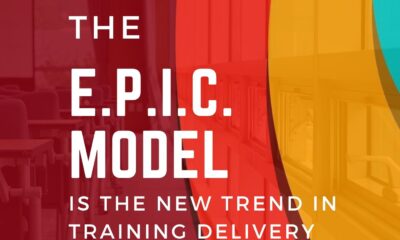Basics
40 Expert Definitions you need to know before you learn modern management

| # | Term | Definition |
| 1 | Organizational flexibility | The organization can respond to various environmental changes and developments, whether internal or external. It includes the appropriate response to a prevailing situation or circumstance. |
| 2 | The strategic manager | The strategic manager is every person who oversees the strategic management of the organization through making strategic decisions, formulating the strategy, implementing it, and following it up, and is responsible for the outcomes of the organization. |
| 3 | Strategic management | It is the process of drawing the future direction of the organization and choosing the appropriate pattern and behavior in the long term in the light of environmental factors and variables. Strategic management is concerned with the basic and important decisions for the organization that affects its position and its relationship with the elements of its environment. |
| 4 | Innovative thinking | It refers to the individual’s ability to create something new by mixing existing elements in a creative way that leads in the end to a new intellectual value. Innovative thinking is characterized by the following characteristics: Intellectual fluency, spontaneous flexibility, the ability to the remote association, and the ability to renew. |
| 5 | Strategic thinking | Refers to those mental and intellectual abilities and skills necessary for the individual to carry out strategic actions and practice the tasks of strategic management, from the process of defining the mission, goals, and objectives of the organization, formulating the strategy, implementing it, and monitoring the implementation process. Among the characteristics of strategic thinking are the following: insight, environmental sensing, ability to analyze and interpret data and information, strategic choice skill, social response, comprehensive and complete knowledge of the various aspects of the organization, its environment, and activity requirements, in addition to excellence in broad scientific and applied knowledge, and having the advantages of innovative thinking. |
| 6 | Management dashboard | Represents a set of performance indicators that measure the performance of the organization and the extent to which it achieves its objectives to help the manager to follow up and monitor the progress of achievement and to follow up the actual implementation of the strategic plans, and then provides a tool that enables the manager to intervene on time to correct errors and modify and develop plans. A set of indicators that are selected by a group of managers and which express the efficiency of management, as it enables to detect of the errors and deviations when they occur and then correct them promptly. |
| 7 | Intellectual capital management | The emergence of this concept is associated with the increase in the importance of knowledge in the completion of activities and its widespread, so organizations are looking at knowledge products that are the product of mental and intellectual capabilities as an important resource for their activities. It expresses that knowledge can be converted into profits and that comes from the mental and intellectual capabilities of the human resource. As for intellectual capital management, it refers to those activities and efforts that are concerned with how to provide, maintain, develop and make the best use of those capabilities in a way that supports the competitive position of the organization, ensures its survival, and maximizes its profits. |
| 8 | Excellence management | Excellence management includes various procedures and methods that enable the organization to embrace competition, raise its performance, and maintain customer loyalty, through continuous development and improvement of its mechanisms, policies, work and production methods along with the development of competencies and skills, encouragement of innovation, and communication in addition to the development of the relationship with the surrounding environment. Those activities make the organization distinct and superior in its performance over the rest of the competitors. |
| 9 | Competitiveness | The competitiveness of the organization is determined by its ability to face environmental threats and challenges. Competitiveness has two main dimensions. The first is determined by the competencies and resources owned by the organization, which from its competitive capabilities, and the second is related to its position in the market, which is determined through the way of acting and dealing with the components and parties of the market, where this dimension determines the extent of its distinction and uniqueness from the rest of the competitors. |
| 10 | Competitive capabilities | Competitiveness represents the various factors and internal capabilities of the organization that enable it to compete better and achieve an appropriate competitive position. Concerning technology, no matter how different the methods of owning and developing competitive capabilities, the primary source for it remains the resources with their movement and relative scarcity, and the ability to make optimal use of them. |
| 11 | Competitive advantage | It reflects the organization’s appearance in the market, and it represents the distinction and uniqueness of the organization from the rest of its competitors in one of the areas of competition such as quality, cost, flexibility, or speed of delivery, and the competitive advantage is achieved through the optimal and distinct exploitation of the competitive capabilities of the organization. |
| 12 | Total Quality Management | It is efforts and activities that aim to comprehensively improve all operations, activities, and functions of the organization, focusing on meeting the needs and requirements of the customer. It is a management philosophy aimed at permanent and comprehensive improvement and development of all operations and parts of the organization to achieve conformity with the desires and needs of the client, as it includes the individual, the job, and the organization as a whole with its various parts. |
| 13 | ISO certificates | ISO is a global certificate that contains a set of international specifications and standards for processes and systems. Organizations implement change and improvement to obtain that certificate, while the total quality is studying the customer’s desires to create change and comprehensive and continuous development based on customer satisfaction. |
| 14 | Knowledge management | Knowledge management can be considered as the various organized and planned activities directed to obtaining knowledge through production or its acquisition from external sources and then benefiting from it. Making the most of cognitive abilities and skills to produce knowledge, then use it in production processes. |
| 15 | organizational knowledge | It is represented in all forms of knowledge that the organization deals with and that results from the interaction of its elements in conducting the work assigned to them and in their dealings with the elements of the surrounding environment of the organization. |
| 16 | Organizational learning | Continuing to be active and interacting with the environment, including the factors and variables it contains, make individuals, regardless of their culture or background, learn from the events they are going through, considering that the organization is a social entity whose elements interact internally as they interact with the elements of the external environment affected by and influence. Through events and cases that may or may not be repeated, the organization can benefit from those experiences and events it is going through information systems that can store information and knowledge, and can also benefit from its human elements that can learn, since it can improve and develop its behavior as it increases the duration of work and practical experience, and then it can be said that the organization can also improve and develop its behavior among the elements of its environment depending on the experience of its experience and field practice in acting and dealing with the various variables and elements of its environment, and this is through its acquisition of new knowledge and expertise. |
| 17 | Learning Curve | Learning reflects the positive, permanent, and relatively continuous change in the behavior of the individual in a way that leads to improving his/her performance in quantity and quality, through experiences and knowledge obtained through either 18practice or training, education, reading, and other means of learning. The ind19ividual during his/her life acquires cumulative knowledge and experiences that enable him/her to develop and improve his/her behavior within the organization. Accordingly, the learning curve expresses the development and improvement in the behavior of the individual resulting from obtaining new knowledge and experiences. |
| 18 | E-management | The emergence of the concept of electronic management is associated with the widespread and use of information and communication technology in administration. Electronic management is a concept that refers to the main and pivotal reliance on technology in the completion of tasks and administrative work, which contributes to increasing the effectiveness and quality of performance, speed up processes and communication, along with rapid transfer of information and knowledge, as it is the effective use of information and communication technology. Where These techniques are applied in the following areas: Communication, decision-making, completion of functions of management, management information systems, administrative development and human resource development, design, and engineering. The use of technology in administrative work is so broad that it includes almost all administrative tasks. The progress and spread of these techniques in the administration continue to rise with the progress and development of these techniques. |
| 19 | Crisis management | As a result of the complexity of the organization’s environment and a large number of threats in a way that raises the rate of emergence of crises and raises their negative effects on the organization, this has resulted in a special administrative concept which is entrusted with crises, whether related to trying to avoid them or by minimizing their effects. |
| 20 | Risk management | The concept of risk refers to that circumstance or situation that is uncertain to occur as a result of the complexity, overlapping, and ambiguity of the environment, or as a result of the lack and inadequacy of the information available for decision-making by adopting an effective forecasting method. |
| 21 | Competency Management | Competencies are the sum of the distinct capabilities and skills that characterize the organization and form the basis of its competitiveness. Providing them with the appropriate working conditions and the necessary incentives for their development and pushing them to exert the maximum possible effort in a way that supports the competitiveness of the organization. |
| 22 | Empowerment | It requires providing the individual with all the appropriate capabilities and conditions to release his/her energies and capabilities, through freedom of initiative and action. The individual bears full responsibility, as it is done according to the position and not according to the person. As for delegation, the responsibility is borne by the manager, and it is determined according to the individual and not according to the position. |
| 23 | Strategic management of human resources | The strategic management of human resources is the approach or framework for making strategic decisions regarding all employees at all organizational levels. This strategic management is directed under the umbrella of the main strategy of the organization; through the administration of its human resources that contribute to the implementation of the strategic plan of the organization. |
| 24 | Career path | During his/her professional life, the individual works in several jobs and performs several tasks that differ in terms of nature, responsibility, and importance. This is what gives him/her accumulated and renewable skills and experiences according to the renewal of positions and tasks performed. The entire job is what makes them gain experience, develop their skills and improve their behavior at work. The career path represents the various professional experiences and practical behaviors accumulated by the individual that he/she obtains through changing positions and roles within the same organization or from one organization to another, whether it is at the same administrative level or higher. Changing jobs through transfer and promotion makes the individual acquire new skills and experiences, which are reflected positively on his/her behavior and within the organization. |
| 25 | Administrative development | Administrative development is an organized purposeful intervention process that seeks to make the administration’s operations, methods, and means compatible with the environmental development, as well as making the administration’s operations, methods, and techniques compatible with the comprehensive development goals “economic, social and cultural”. It can also be defined as a comprehensive intervention strategy that depends on an organized effort aimed at bringing about change to improve the efficiency and effectiveness of administrative authorities to develop their ability to renew, develop and adapt to rapid changes “technical-scientific – political – legislative – economic”. |
| 26 | Human resource development | It refers to efforts and activities aimed at developing the human element in the production process, as represented in the activities of providing human resources and raising and developing their capabilities, and then maximizing their contribution to improving and developing the performance of the organization. We refer here to the essential difference between human resource development and human development in the fact that The latter represents those activities that raise the capabilities and skills of the human element for humanitarian purposes, that is, to increase its ability to face the challenges and difficulties of his/her life. Improving human life and well-being, for example, the level of education, the standard of living, the unemployment rate, etc., in contrast to the development of human resources, which raises the capabilities and skills of the human element in the production process, i.e. to increase its contribution to the production process. On his energies and capabilities, the human element is evaluated here by the extent of its contribution to the production process, and its productive examples. |
| 27 | Organizational development | It is a long-term plan to improve the performance of the organization in the way it solves problems, renews and changes its administrative practices. This plan relies on a collaborative effort between administrators, taking into account the organization’s environment and organizational characteristics. Organizational development focuses on the structural and organizational characteristics of the organization and aims to increase organizational flexibility and raise its ability and performance. |
| 28 | Resistance to change | It is reactions of rejecting change, as a result of fear of the consequences of change that may result in changing roles and positions. Resistance to change usually appears as a result of the ambiguity of its goals and policies or it’s ignoring the characteristics and values of the organization and individuals. |
| 29 | Change management | It refers to efforts that aim to bring about the necessary change to the system, through the activities of planning, organizing, and then implementing change. The change process requires three basic stages: unfreezing, change, and freezing. |
| 30 | Organizational culture | It represents the cultural and value heritage of the organization that governs the actions and behaviors of individuals and their attitudes towards various administrative and technical issues. It represents the values, beliefs, concepts, and ways of thinking common among the members of the organization. Organizational culture has a major role in influencing the behavior of individuals and the organization’s trends and formulating strategies and management plans. It also plays a major role in the cohesion and synergy of groups within the organization, as it provides a sense of personal and identity among individuals and works on the stability of the organization, as it constitutes a moral guide for the behavior of individuals. |
| 31 | Restructuring | It is the process of rebuilding the organization as it focuses on changing jobs, divisions, and activities as a result of merging and removing or adding jobs and activities, and as a result, it appears to reduce employment and reduce the size of the organization, to increase the organization’s ability to respond to changes and competition, and restructuring comes as a result of either stagnation conditions or technological development or business re-engineering. |
| 32 | Reengineering | It is to fundamentally re-design operations to achieve major leaps in performance, as it is called reengineering, rebuilding, re-engineering, as it is a fundamental change of operations, as it starts from scratch and focuses on operations, not jobs and activities. |
| 33 | Strategic alliances | As a result of the increased intensity of competition between business organizations to control markets and resources, alliances began to appear as an alternative and as a strategic choice among business organizations to either share markets or resources or benefit from the capabilities and experiences of others, strategic alliances have appeared in several forms, including joint venture, subcontracting, financial alliance, marketing alliance, and technology alliance |
| 34 | Internal Marketing | It includes various policies and communication methods aimed at influencing the internal customer to gain their loyalty. It is a set of activities directed towards determining the needs and desires of employees within the organization (the internal customer) and working to satisfy those needs and desires using marketing strategies. |
| 35 | Customer satisfaction and loyalty | Customer satisfaction can be defined as a feeling of satisfaction as a result of the organization’s success in achieving the customer’s desires and needs, that is, it occurs when the services provided by the organization match the expectations and perceptions of the customer. |
| 36 | Time Economics | Due to the changing nature of competition in a way that focuses more on gaining customers’ loyalty and achieving their satisfaction, the organizations’ interest has tended to focus on improving and developing customer service, and this requires achieving speed and flexibility in performance, so a new concept based on the economics of time emerged through making the most of the available time and making the best use of it, whether in terms of increasing the speed of response to the needs and requirements of customers or by using the time to develop capabilities and skills and then improve performance or in terms of finding effective time management and adherence to deadlines and schedules. |
| 37 | Organizational commitment: | A psychological state that (a) characterizes the employee’s relationship with the organization, and (b) has implications for the decision to continue or discontinue membership in the organization (Meyer & Allen, 1991, p. 67). |
| 38 | Organizational citizenship behavior | “(OCB) is a term that’s used to describe all the positive and constructive employee actions and behaviors that aren’t part of their formal job description. It’s anything that employees do, out of their own free will that supports their colleagues and benefits the organization as a whole” – Neelie Verlinden |
| 39 | Learning organizations | “A learning organization is an organization skilled at creating, acquiring, and transferring knowledge, and at modifying its behavior to reflect new knowledge and insights” – Peter M. Senge. |
| 40 | Self-managed work teams | “A small group of employees who take full responsibility for delivering a service or product through peer collaboration without a manager’s guidance. This team often works together long-term to make decisions about a particular process” – Shonna Waters. |
Basics
The Power of Digging Deeper: Unraveling Problems with Root Cause Analysis

In today’s fast-paced world, it’s easy to fall into the trap of providing quick-fix solutions to problems without truly understanding their underlying causes. But what if I told you there’s a powerful tool that can help you cut through the surface-level issues and get to the root of the problem?
Root Cause Analysis (RCA) is a systematic approach that enables you to dig deeper and unravel the complex web of factors that contribute to a problem. By identifying the underlying causes, RCA empowers you to implement targeted and effective solutions that address the root of the issue, rather than just treating the symptoms.
Whether you’re a business owner looking to eliminate recurring problems or an individual striving for personal growth, mastering the art of RCA can be a game-changer.
In this article, we will explore the power of digging deeper through Root Cause Analysis and how it can transform the way you approach and solve problems. Get ready to unlock the secrets to lasting solutions and uncover the true power of RCA.
What is Root Cause Analysis?
Root Cause Analysis (RCA) is a structured method used to identify the underlying causes of problems or incidents. It involves a comprehensive investigation into the factors that contributed to the issue, aiming to uncover the root cause rather than simply addressing the symptoms. By understanding the root cause, you gain valuable insights that enable you to implement effective solutions and prevent the problem from recurring.
RCA is commonly used in various fields, including business, engineering, healthcare, and quality management. It helps organizations and individuals examine their processes, systems, and behaviors to identify areas for improvement. By adopting a systematic and analytical approach, RCA provides a solid foundation for problem-solving and decision-making.
The Importance of Root Cause Analysis
Root Cause Analysis is essential for effective problem-solving and decision-making. It goes beyond surface-level solutions and helps you understand the underlying factors that contribute to a problem. By addressing the root cause, you can prevent the problem from recurring, saving time, resources, and frustration.
One of the key benefits of RCA is its ability to eliminate guesswork. It provides a structured framework that guides your investigation, ensuring that you consider all relevant factors and collect the necessary data. This systematic approach helps you avoid jumping to conclusions or implementing ineffective solutions.
RCA also encourages a proactive mindset. Instead of treating problems as isolated incidents, it encourages you to view them as opportunities for improvement. By focusing on the root cause, you can identify patterns, trends, and systemic issues that may be impacting your organization or personal life. This proactive approach allows you to address the underlying causes and create lasting solutions.
Benefits of Using Root Cause Analysis
Using Root Cause Analysis offers several benefits for both individuals and organizations. Let’s explore some of the key advantages:
1. Effective Problem Solving:
RCA enables you to identify the root cause of a problem, allowing you to implement targeted and effective solutions. By addressing the underlying factors, you can eliminate the problem at its source, rather than just treating the symptoms.
2. Prevention of Recurring Issues:
By understanding the root cause, you can implement preventive measures that eliminate the likelihood of the problem recurring. This saves time, resources, and frustration in the long run.
3. Improved Decision Making:
RCA provides valuable insights that inform your decision-making process. By understanding the underlying causes, you can make more informed choices that align with your goals and objectives.
4. Enhanced Efficiency:
By addressing the root cause, you can streamline your processes and systems, leading to increased efficiency and productivity.
5. Continuous Improvement:
RCA encourages a proactive approach to problem-solving, fostering a culture of continuous improvement. By consistently analyzing and addressing root causes, you can drive ongoing growth and development.
Steps to Conduct a Root Cause Analysis
Conducting a Root Cause Analysis involves a systematic approach that consists of several steps. While the specific steps may vary depending on the context and problem at hand, the following framework provides a general guideline:
1. Define the Problem:
Clearly articulate the problem or incident that you want to analyze. This step ensures that everyone involved has a shared understanding of the issue.
2. Gather Information:
Collect relevant data and information related to the problem. This may include incident reports, interviews, data analysis, and documentation. The goal is to gather as much information as possible to inform your analysis.
3. Identify Possible Causes:
Brainstorm and list all the potential causes that could have contributed to the problem. This step encourages creative thinking and ensures that you consider a wide range of possibilities.
4. Analyze Causes:
Evaluate each potential cause and determine its likelihood and impact. Use tools such as cause-and-effect diagrams, fishbone diagrams, or the 5 Whys technique to explore the relationships between causes and effects.
5. Determine the Root Cause:
Based on your analysis, identify the underlying factor or factors that are most likely responsible for the problem. This may involve further investigation and validation.
6. Develop Solutions:
Once you have identified the root cause, brainstorm and develop targeted solutions that address the underlying factors. Ensure that your solutions are practical, feasible, and aligned with your goals.
7. Implement and Monitor:
Put your solutions into action and monitor their effectiveness. This step allows you to assess whether the problem has been resolved and identify any potential issues or barriers.
8. Learn and Improve:
Reflect on the RCA process and outcomes. Identify lessons learned and areas for improvement to enhance your future problem-solving efforts.
By following these steps, you can conduct a thorough and effective Root Cause Analysis that uncovers the underlying causes of a problem and guides your decision-making process.
Tools and Techniques for Root Cause Analysis
There are various tools and techniques that can enhance your Root Cause Analysis process. Here are some commonly used ones:
1. Cause-and-Effect Diagrams:
Also known as Ishikawa or fishbone diagrams, these visual tools help you identify potential causes and explore their relationships. They provide a structured framework for brainstorming and categorizing causes into different categories, such as people, processes, equipment, environment, and materials.
2. 5 Whys Technique:
This technique involves repeatedly asking “Why?” to uncover the underlying causes of a problem. By digging deeper with each “Why?” question, you can reach the root cause.
3. Pareto Analysis:
This technique helps you prioritize the causes based on their frequency or impact. It allows you to focus on the most significant factors and allocate resources accordingly.
4. Failure Mode and Effects Analysis (FMEA):
FMEA is a systematic approach used to identify potential failure modes and their effects. It helps you anticipate and prevent problems before they occur.
5. Statistical Analysis:
Statistical tools, such as regression analysis or hypothesis testing, can be used to analyze data and identify patterns or correlations that contribute to the problem.
These tools and techniques provide valuable frameworks and methodologies for conducting a thorough Root Cause Analysis. By leveraging them effectively, you can enhance your problem-solving capabilities and uncover deeper insights.
Common Challenges in Root Cause Analysis
While Root Cause Analysis offers numerous benefits, it also presents several challenges that you may encounter during the process. Being aware of these challenges can help you navigate them effectively. Some common challenges include:
1. Complexity:
Some problems may have multiple causes and factors that interact in complex ways. Untangling this complexity requires patience, thoroughness, and a systematic approach.
2. Limited Data or Information:
Insufficient or incomplete data can hinder your analysis and make it challenging to identify the root cause. In such cases, it may be necessary to gather additional information or use alternative analytical methods.
3. Subjectivity:
Root Cause Analysis involves interpretation and judgment, which can introduce subjectivity. It’s crucial to ensure that your analysis is based on objective data and evidence, minimizing bias.
4. Time Constraints:
Conducting a thorough RCA takes time, and tight deadlines may limit your ability to explore all potential causes. In such situations, it’s important to prioritize and focus on the most significant factors.
5. Resistance to Change:
Implementing solutions based on the root cause may require changes to processes, systems, or behaviors. Resistance to change can pose challenges and require effective change management strategies.
By recognizing and addressing these challenges, you can navigate the Root Cause Analysis process more effectively and achieve more accurate results.
Real-Life Examples of Successful Root Cause Analysis
To illustrate the power of Root Cause Analysis, let’s explore some real-life examples where RCA has been successfully applied:
1. Manufacturing Industry:
A manufacturing company experienced frequent product defects, resulting in increased costs and customer complaints. By conducting an RCA, they discovered that a faulty machine component was causing the defects. They implemented a targeted solution, replacing the faulty component and improving quality control processes, resulting in a significant reduction in defects.
2. Healthcare:
A hospital noticed a high rate of patient falls and injuries. Through RCA, they identified insufficient staff training, poorly designed rooms, and inadequate patient monitoring as contributing factors. By addressing these root causes, they implemented training programs, redesigned rooms to improve patient safety, and enhanced monitoring protocols, resulting in a decrease in falls and injuries.
3. Software Development:
A software development team faced recurring software bugs and delays. RCA revealed that miscommunication and unclear requirements were causing the issues. By improving communication channels, implementing a more structured requirements gathering process, and enhancing quality assurance practices, they were able to deliver software with fewer bugs and on schedule.
These examples demonstrate the transformative impact of Root Cause Analysis. By digging deeper and uncovering the underlying causes, organizations can implement targeted solutions that address the root of the problem, resulting in improved outcomes and increased efficiency.
Implementing Solutions Based on Root Cause Analysis
Identifying the root cause is only the first step. To achieve lasting solutions, it’s crucial to implement the recommendations effectively. Here are some key considerations when implementing solutions based on Root Cause Analysis:
1. Clear Communication:
Clearly communicate the identified root cause, recommended solutions, and the rationale behind them. Ensure that all stakeholders understand the importance of addressing the root cause and the benefits of the proposed solutions.
2. Engage Relevant Stakeholders:
Involve all relevant stakeholders in the implementation process. This may include employees, management, customers, or other external partners. Engaging stakeholders fosters ownership, collaboration, and commitment to the solutions.
3. Allocate Resources:
Provide the necessary resources, such as funding, time, and expertise, to implement the solutions effectively. Consider the potential costs and benefits of the solutions and allocate resources accordingly.
4. Monitor and Evaluate:
Continuously monitor the effectiveness of the implemented solutions. Collect data, measure outcomes, and assess whether the root cause has been effectively addressed. This allows you to make necessary adjustments and ensure long-term success.
5. Promote a Learning Culture:
Encourage a learning culture within your organization or personal life. Embrace the lessons learned from Root Cause Analysis and use them to drive continuous improvement. Foster a mindset of curiosity, innovation, and adaptability.
By implementing solutions based on Root Cause Analysis effectively, you can create lasting change and improve your problem-solving capabilities.
Training and Resources for Mastering Root Cause Analysis
Mastering Root Cause Analysis requires knowledge, skills, and experience. Fortunately, there are various training programs, resources, and tools available to help you enhance your RCA capabilities. Here are some options to consider:
1. Training Programs:
Enroll in RCA training programs or workshops offered by professional organizations, universities, or consulting firms. These programs provide in-depth knowledge, practical techniques, and case studies to develop your RCA skills.
2. Certifications:
Pursue certifications in Root Cause Analysis, such as the Certified RCA Analyst (CRAA) or the Certified RCA Facilitator (CRAF). These certifications validate your expertise and enhance your professional credibility.
3. Books and Publications:
Explore books, articles, and publications on Root Cause Analysis. Authors like Ishikawa, Deming, or Ohno have made significant contributions to the field and offer valuable insights.
4. Online Resources:
Leverage online platforms, forums, and communities dedicated to Root Cause Analysis. Engage in discussions, ask questions, and share experiences to learn from others in the field.
5. Internal Training and Mentoring:
If you’re part of an organization, seek internal training or mentoring opportunities. Learn from experienced colleagues or experts within your organization who have expertise in RCA.
By investing in your RCA skills and leveraging the available resources, you can become a proficient Root Cause Analyst and drive meaningful change in your personal and professional life.
Conclusion: Harnessing the Power of Root Cause Analysis
In our fast-paced world, taking the time to dig deeper and understand the root causes of problems is crucial for lasting solutions. Root Cause Analysis provides a systematic and structured approach to unraveling complex issues, empowering you to address the underlying causes rather than just treating the symptoms. By mastering the art of RCA, you can transform the way you approach and solve problems, whether in your business or personal life.
Root Cause Analysis offers numerous benefits, including effective problem-solving, prevention of recurring issues, improved decision-making, enhanced efficiency, and a culture of continuous improvement. By following a systematic process and leveraging tools and techniques, you can conduct a thorough RCA and uncover deeper insights.
While Root Cause Analysis presents challenges, such as complexity, limited data, subjectivity, time constraints, and resistance to change, recognizing and addressing these challenges can help you navigate the process effectively.
Real-life examples demonstrate the power of RCA in various industries, from manufacturing to healthcare to software development. Implementing solutions based on RCA requires clear communication, stakeholder engagement, resource allocation, monitoring, and a learning culture.
To master Root Cause Analysis, explore training programs, certifications, books, online resources, and internal mentoring opportunities. By investing in your RCA skills, you can become a proficient problem-solver and drive meaningful change.
Harness the power of Root Cause Analysis and unlock the secrets to lasting solutions. Dig deeper, understand the root causes, and transform the way you approach and solve problems. Get ready to unravel complex issues and unleash the true power of RCA.
Basics
The Best 5 Planning Strategies for Startups
Planning is an important part of starting a business. It helps you set goals, prioritize tasks, and keep track of progress. Here are five essential planning strategies that will help you plan effectively.

Planning is an important part of starting a business. It helps you set goals, prioritize tasks, and keep track of progress. Here are five essential planning strategies that will help you plan effectively.
1- Identify Key Resources.
One of the first things you should do when planning your startup is identify key resources. These might include people, money, equipment, software, or other items that are needed to launch your company. You need to make sure that these resources are available before you begin building your product.
You should identify key resources such as equipment, supplies, and people who can help you. Once you know what you need, you can create a detailed plan for getting those things. For example, if you want to open a bakery, you might need to buy a mixer, baking pans, and ingredients. If you want to sell handmade jewelry, you might need to purchase a sewing machine, beads, and other materials.
2- Find Funding.
Once you have identified your resources, you will need to determine how much funding you need to build your product. This is an important decision because it will affect how quickly you can move forward with your business plan. If you have limited funds, you may need to consider alternative ways to raise capital.
According to Dave Lavinsky “The 5 Most Common Funding Sources” are:
- Funding from Personal Savings. Funding from personal savings is the most common type of funding for small businesses.
- Business Loans.
- Friends & Family.
- Angel Investors.
Angel investors are generally wealthy individuals like friends and family members; you just don’t know them (yet). At present, there are about 250,000 private angel investors in the United States that fund more than 30,000 small businesses each year. Therefore, Networking is a great way to find an angel investor for your business.
- Venture Capital.
Venture capitalists and VC firms are professional investors that are more involved with business management, and they play a significant role in setting milestones, targets, and giving advice on how to ensure greater success.
3- Create a Business Plan.
A business plan is a document that outlines your goals, objectives, and strategy for building your company. It should also contain financial projections and other key metrics that will help you measure your success.
The first step in creating a business plan is deciding what kind of business you want to start. You should think about whether you want to be a sole proprietor, work for yourself, or join a company. If you decide to go into business on your own, you’ll need to create a business plan. A business plan is a document that outlines your business idea, describes your products and services, explains how you’re going to market them, and shows how much capital you’ll need to get started.
For example, if you want to launch a new product line, you might decide to create a prototype, conduct market research, and develop a marketing strategy.
Once you have identified each step, you can determine how much time and resources you will need to complete each task. However, if you hire employees, you will need to establish job descriptions, interview potential candidates, and train them.
*Find out how to manage unplanned and sudden tasks like a master: How to manage Unplanned and Sudden Tasks like a master? – SKILLTECS
4- Build a Minimum Viable Product (MVP).
MVP (Minimum Viable Product) is a prototype of your product that you build first before launching your full product. This allows you to test out your idea with real users and gather feedback before investing too much money into developing your product.
An MVP is a version of your idea that is ready to be tested. You should test it before investing too much time into building something bigger than what you want to accomplish. Once you have built your MVP, you can use it to determine whether you should invest more time and resources into developing your idea further.
If you find that your MVP isn’t working, then you know that there’s a problem with your idea.
5- Identify Your Market Niche.
Once you have an idea for what you want to build, you need to identify who will use your product. You should consider the following questions when determining your market niche: What problem does your product solve? Who is your ideal customer? How do you plan to reach them?
One of the basic steps in planning is identifying your market niche. What type of products or services do you want to offer? Do you want to sell online or offline? Are you looking to start a home-based business or work from a brick-and-mortar location? Once you know what you want to offer, you can determine whether you should focus on one product or service or multiple ones.
You might decide to specialize in selling one particular item, such as a certain brand of clothing or a specific kind of jewelry. Or you could choose to offer several different items, such as a line of handbags or a variety of greeting cards.
*Learn more about planning here: All You Need to Know About Planning – YouTube
Basics
Can Effective Leadership Actually Be Taught? Four Myths About Leadership
Effective leaders must possess a set of skills that allow them to motivate others, communicate effectively, and manage conflict. These traits cannot be learned in a classroom setting, but rather must be developed through experience.

Effective leaders must possess a set of skills that allow them to motivate others, communicate effectively, and manage conflict. These traits cannot be learned in a classroom setting, but rather must be developed through experience.
We will also look at some of the most common myths about leadership.
There are several myths surrounding what makes an effective leader. One popular myth is that effective leaders are born with certain qualities. While there are certainly people who were born with these characteristics, the truth is that no one has been born with any particular trait. Instead, effective leaders develop their skills throughout their lives.
First myth: Leadership is often defined as having power over other people.
But true leaders are those who use their influence to help others succeed. In order to become an effective leader, one must first understand what makes a person a leader. A leader is someone who has the ability to motivate others, communicate well, and resolve conflicts. The best leaders are able to develop these qualities throughout their lives.
Second myth: Leadership is something that can be taught.
The second myth we will debunk is that leadership is something that can be taught. In fact, there are many people who believe that leadership is simply a skill that can be learned. However, according to Dr. John C. Maxwell, leadership is much more than a skill. He states that leadership is a mindset that allows one to influence and lead others. Leadership is not something that can be taught; it is something that must be cultivated.
The best leaders are those who understand that people are motivated by different things. Some want recognition, while others want to feel valued. Some want to be challenged, while others want to be coddled. And some want to be told what to do, while others want to lead.
Effective leaders are those who know what they want and then go after it. They are able to identify problems and opportunities and take action to solve them. They are able to lead people towards goals and away from distractions. And they are able to work well with other people.
Third myth: There is only one way to be an effective leader.
In fact, there are many ways to lead, and each leader has his or her own style. Some people are natural born leaders, while others learn from watching those who came before them. Regardless of whether one is naturally inclined toward leading, however, there are certain skills that every leader should master.
Fourth myth: Leadership is something innate.
In fact, leadership is a skill that can be learned. Leadership is not a natural talent; it is a learned behavior. As such, there are many ways to develop leadership skills. One of the best ways to learn leadership skills is to observe those who already possess them. Leaders often model their behaviors after successful people. By observing what makes these individuals effective, we can learn from their actions.
-

 Management Tools2 years ago
Management Tools2 years agoWhat is the Drill-Down technique?
-

 Management Tools2 years ago
Management Tools2 years agoAll you need to know about the Pareto principle and the 80/20 rule.
-

 Business2 years ago
Business2 years agoWhat is Curriculum Development and how to implement it?
-

 Business2 years ago
Business2 years agoHow to manage Unplanned and Sudden Tasks in 6 Steps like a Master?
-

 Business2 years ago
Business2 years agoE.P.I.C. Model is the new trend in training delivery.
-

 Business1 year ago
Business1 year agoCommunication Rights & Responsibilities
-

 Management Tools3 years ago
Management Tools3 years agoThe Appreciation Technique
-

 Business2 years ago
Business2 years agoMarketing is the new strategy in Law Enforcement.





